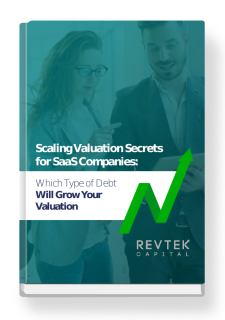Onboarding is not limited to the first few interactions a client has with your product. Instead, it’s time we understand onboarding as encompassing the entire lifecycle of the client.
Suddenly, this takes onboarding into sharper focus, making clear the way in which we welcome, indoctrinate, and interact with our user base as integrated marketing strategies. By taking a look at the bigger picture, we not only understand our clients better, but we can provide them more of what they most enjoy from our brand, whether it’s in outreach, content, or even promotions.
What are the main tenants to cultivate these onboarding practices? Read below to find out more.
Why Does Onboarding Matter?
While we touched on this a little already, onboarding is more meaningful than simply having a good user experience. In fact, the success of your overall onboarding strategy is what will ultimately determine which customers stay with your brand and which look elsewhere.
In its beginning stages, your onboarding program is going to introduce your SaaS company culture to your prospective clients. This includes your free trial, signup process, access to your knowledge base, and potential ways to interact with different support team members to help you navigate this new software.
As time goes on, onboarding becomes a little more complicated, especially if your software is targeted at companies. At some point, you will need to have employee onboarding, team integration, and troubleshooting measures readily available for the first day on the job while using your system.
Finally, as your SaaS product becomes ingrained in the daily workflow of individuals and corporations alike, your onboarding process comes full circle by building a brand around who you are and what you do. This can include sharing to social media, sending out information, and anything else that keeps consumers in touch with your brand.
Knowing this, we can move on to the different types of onboarding styles companies tend to use to determine which might be best for your audience.
Creating Immediate Customer Value
When onboarding a client, you need to see your software from their perspective.
While it may be loaded with features and capabilities, those are not all going to be important to your client at this stage. What they want is to see your product deliver the results they are looking for. They want your product to make life easier, now.
There is no one rule that can help you achieve these results, as it largely depends on what your software aims to do. As such, most companies take an approach where they have a blended process of personalized help (high touch onboarding) and automated onboarding checklists to help your clients guide themselves (low-touch onboarding).
What this blended approach should do is two things:
- Keep the onboarding process simple enough to start quickly
- Have the onboarding process teach them enough to get immediate value
This second point is particularly important as it helps bring customers to an “aha moment.”
The aha moment is a coveted milestone for any SaaS product, as it is the moment when your client fully realizes the value in your product. Once this moment is reached, it is much more likely your software is integrated into your client’s routine, thus reducing their risk for churn.
Monitoring Customer Success
How to know if you are practicing effective onboarding? It’s all in your metrics. The lower your Churn and the higher your LTV, the better indication that you’re doing something right.
However, it’s important to note that metrics are not all that matter. This is because if there is a problem with your software or process, you want to know exactly where that issue occurs to fix it as soon as possible.
Generally, this is done by maintaining good customer contact. Make sure to reach out and monitor product use, perhaps even implementing customer success teams to highlight the good and the bad about your SaaS product. Over time, this will help you collect data to help tweak your process and make it as effective as possible for your target audience.
What We Know About SaaS
At RevTek, we fund and interact with many SaaS entrepreneurs. We know what a good product looks like, but we also know it won’t get far without a good plan.
RevTek helps businesses grow. We do this by providing Capital in exchange for a percentage of your future revenue. In the world of SaaS, where upfront costs can put a real strain on lead generation, that added financial help can be the difference between a small growth spurt and truly amazing results.
Can the added help get your business where you want it to go? Connect with our team to find out.



